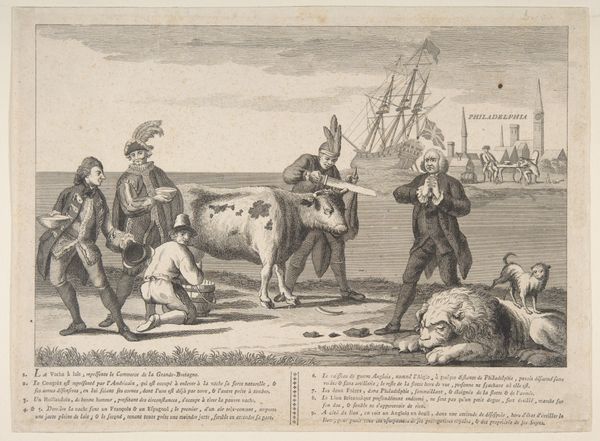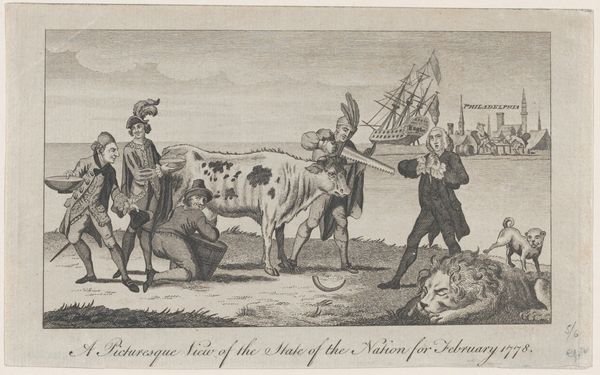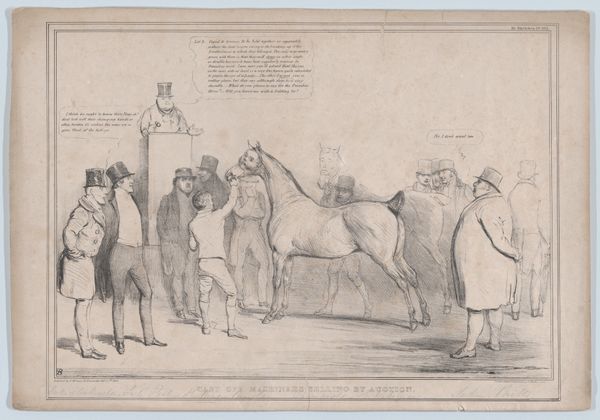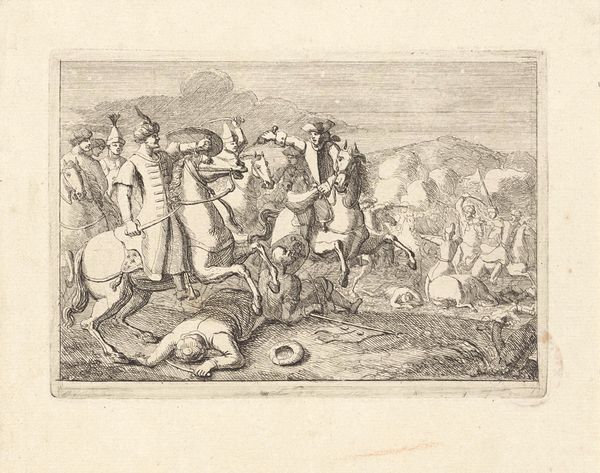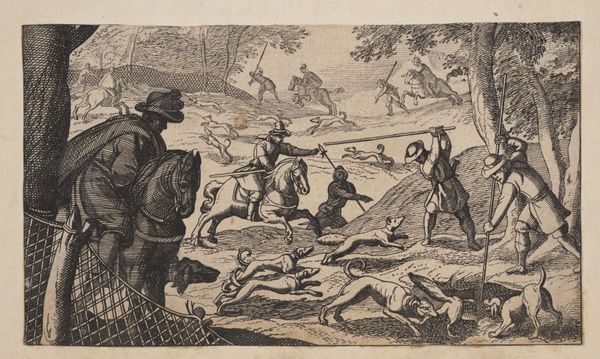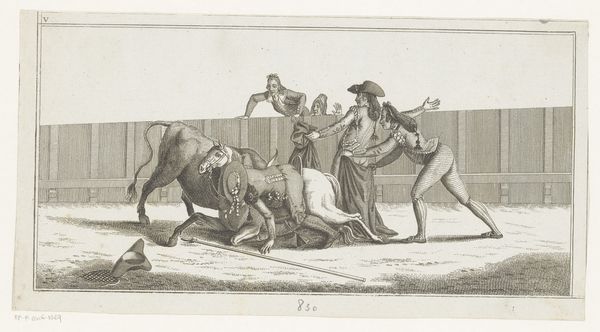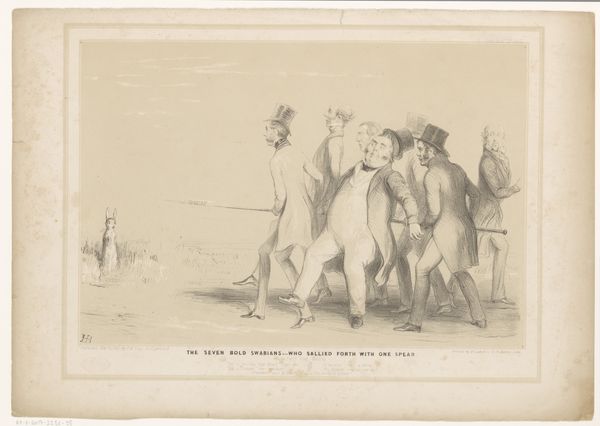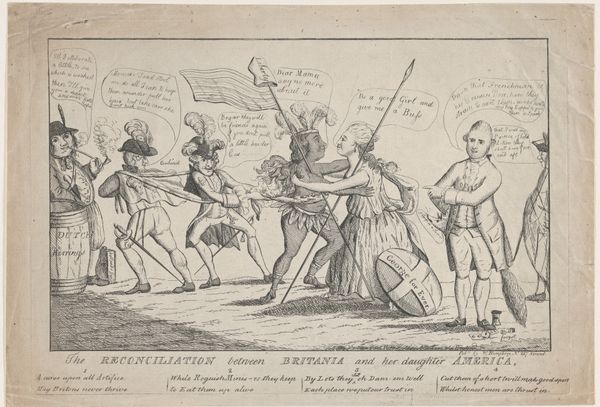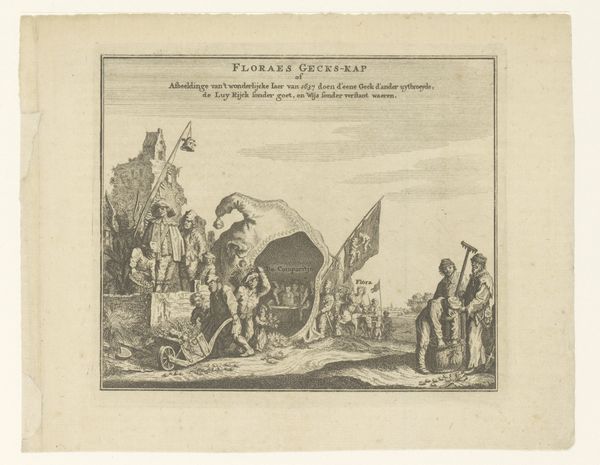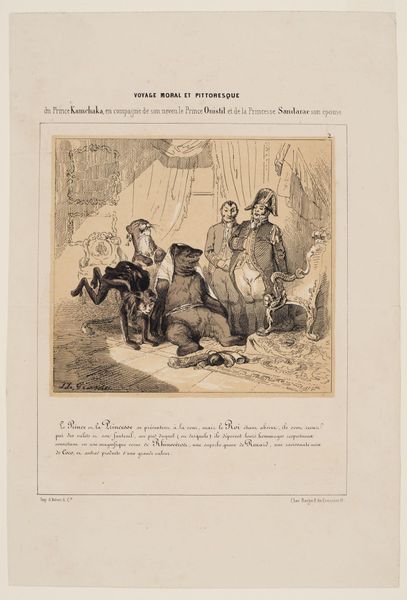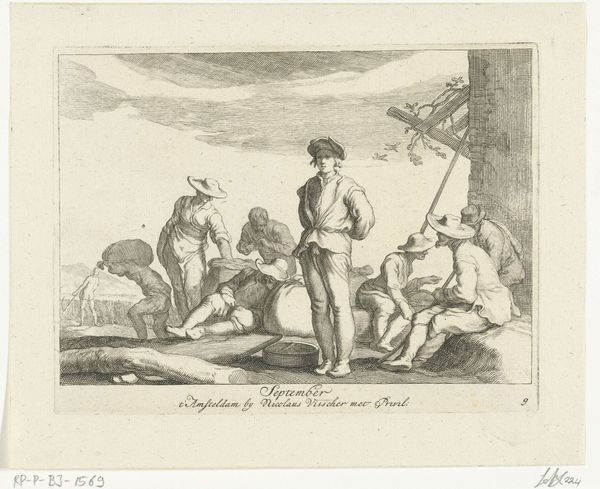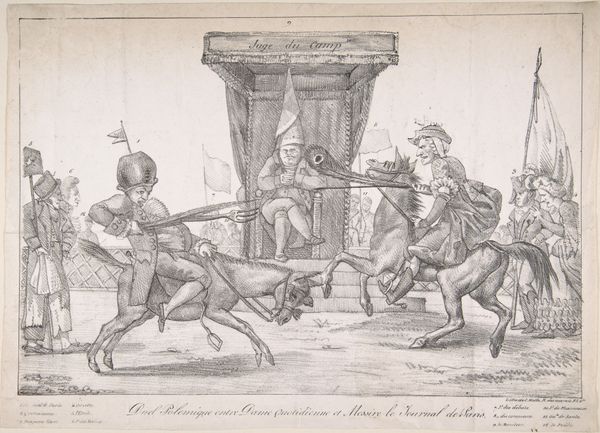
Mal Lui Veut Mal Lui Tourne Dit Le Bonne Homme Richard 1775 - 1785
0:00
0:00
drawing, print, etching, engraving
#
drawing
#
narrative-art
# print
#
etching
#
caricature
#
history-painting
#
academic-art
#
engraving
Dimensions: plate: 8 13/16 x 10 5/8 in. (22.4 x 27 cm) sheet: 10 5/8 x 16 1/4 in. (27 x 41.2 cm)
Copyright: Public Domain
Editor: So, this etching and engraving, dating from 1775 to 1785, is called "Mal Lui Veut Mal Lui Tourne Dit Le Bonne Homme Richard," and it's currently held at the Metropolitan Museum of Art. It's... definitely got a lot going on. It strikes me as very allegorical, and a little bit unsettling. How do you interpret this work? Curator: Indeed, it's layered with symbolism reflecting the anxieties and sentiments of the time. Note the ox being sawed – it’s Great Britain, its vital trade being dismantled by various European powers, represented by the figures with their respective tools. Editor: That's fascinating. I hadn’t picked up on the ox representing Great Britain. What about the figure looking distraught? Is that supposed to be King George? Curator: Precisely! The distraught figure, meant to represent King George III, gestures in dismay at the crumbling state of the British empire, signified further by the lion, an emblem of Britain, lying subdued and gnawing at bones, stripped bare. And observe Philadelphia in the background – a poignant nod to the American colonies breaking away. Can you see how the visual vocabulary conveys this sense of fractured power? Editor: Now that you mention it, yes, it's all much clearer. The ship on the horizon, too...everything seems to emphasize Britain's decline. Curator: And it’s a potent example of how images became a tool for political commentary and persuasion during that era, using familiar symbols to evoke powerful emotions. A coded visual language that resonated with the viewers. Editor: I never would have deciphered so much without your insights! It really highlights how artists used symbols to communicate complex political ideas. Curator: It's a fantastic illustration of the enduring power of symbols to shape understanding and reflect cultural memory.
Comments
No comments
Be the first to comment and join the conversation on the ultimate creative platform.

